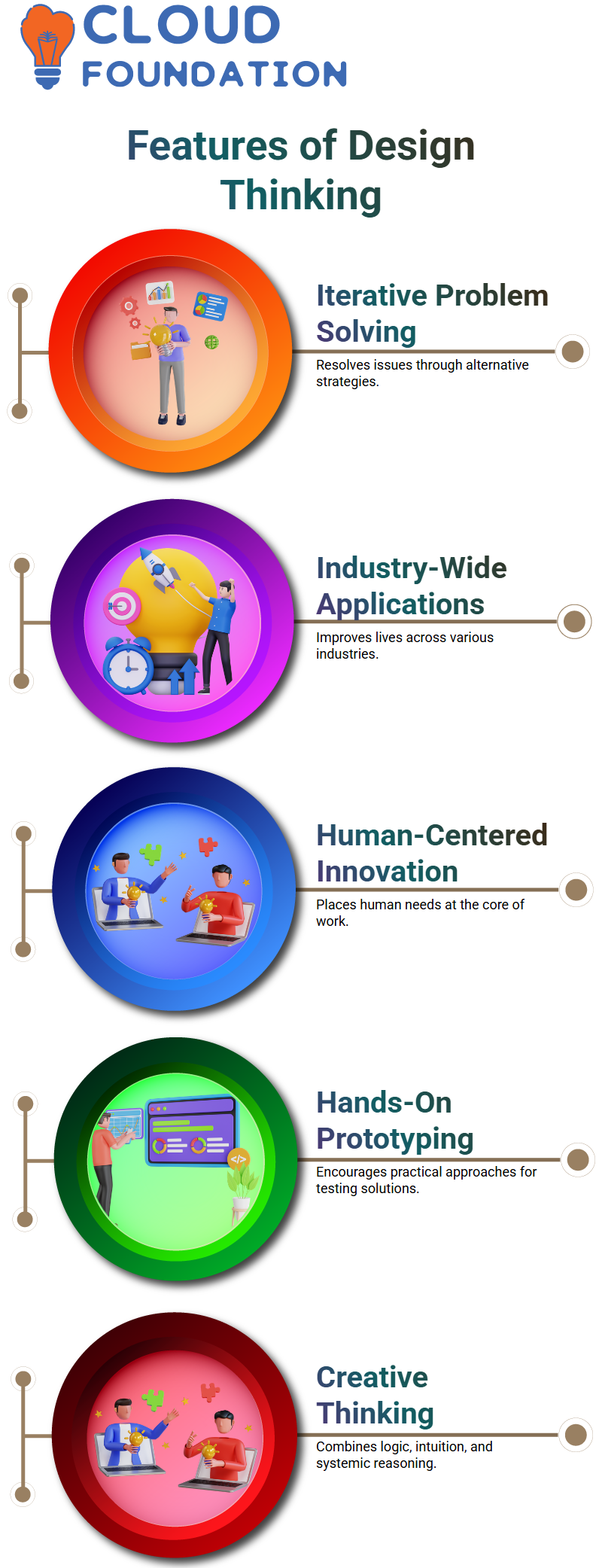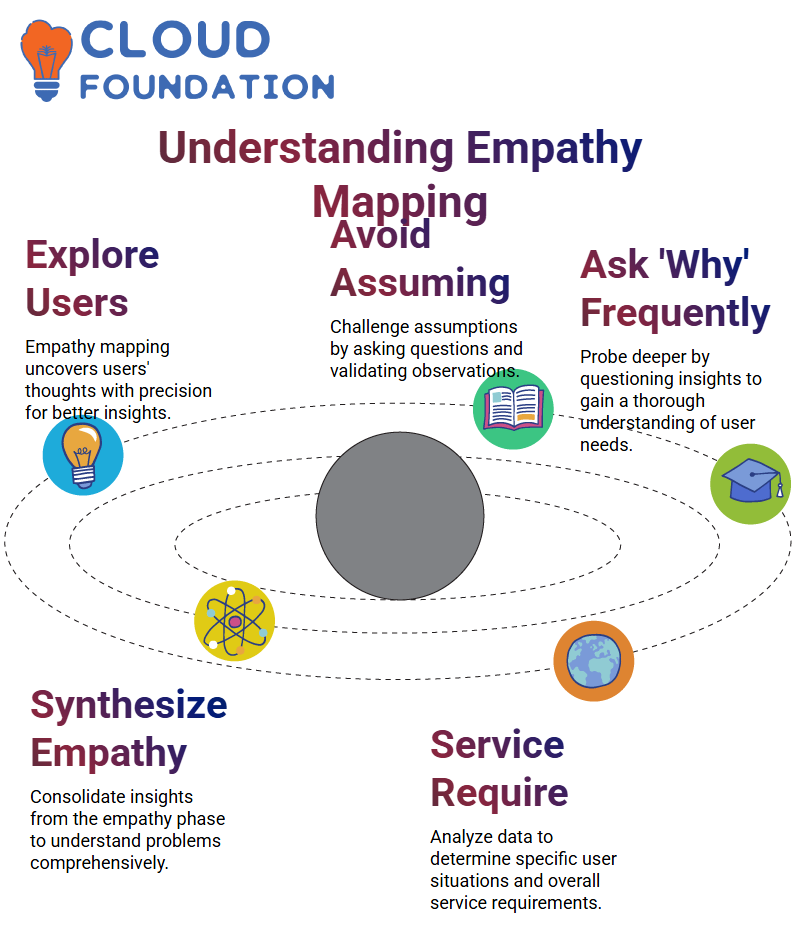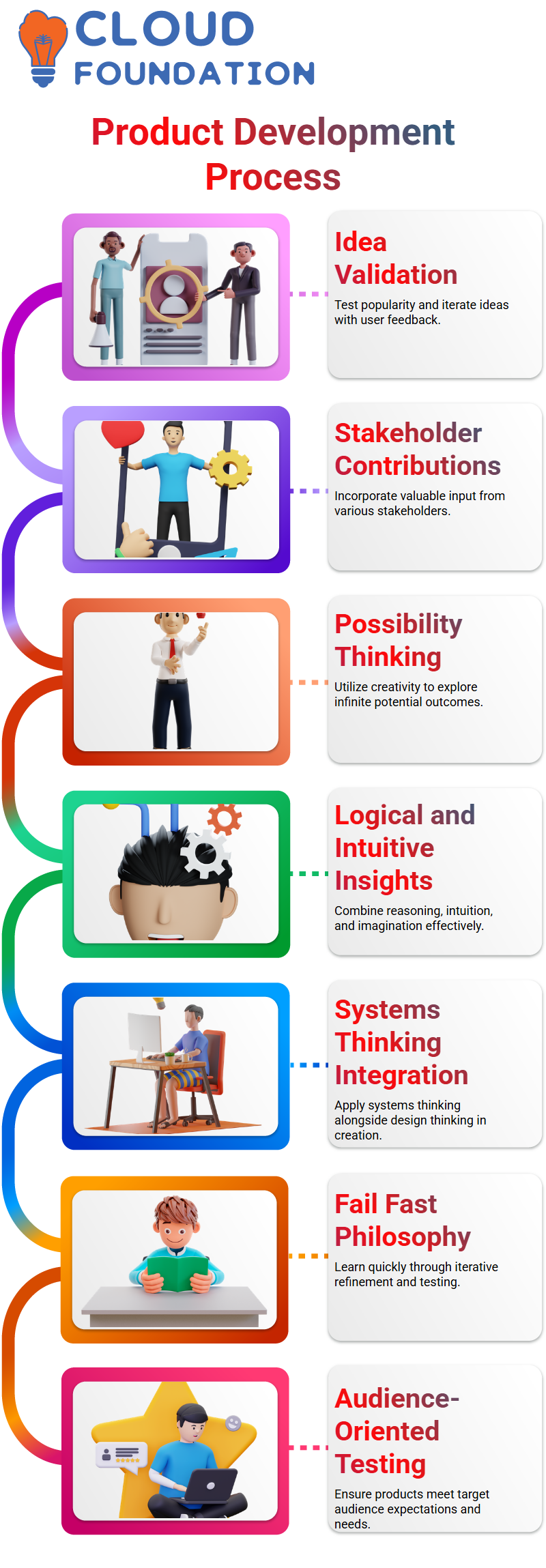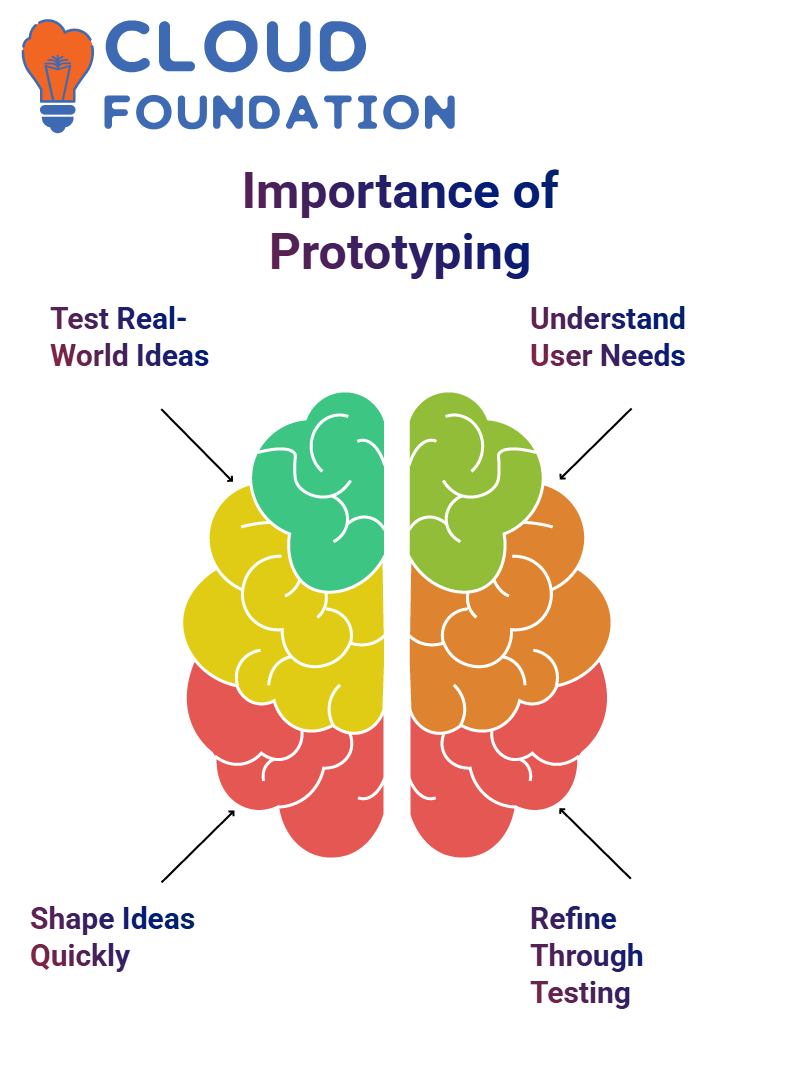Design Thinking Tutorial
What is Design Thinking?
Design thinking is a creative and problem-solving approach that focuses on understanding the user, the human within the user, and the environment as the centre of the operating model.
Design thinking is a philosophy and set of tools that help solve problems creatively. It is a set of tools that companies can use to create new products, solve problems, and develop innovative ideas.
It is not just about creating new products or services, but also about understanding the needs and preferences of customers and stakeholders.
By understanding the process of problem-solving and adopting design thinking, companies can develop more innovative and successful products and services.
Understanding the customer’s behaviour, facts about them, and their pain points helps businesses create more effective and efficient designs. Factors such as personality, preferences, physical appearance, and emotions can also influence the design process.
Features of Design Thinking:
Design thinking is an iterative method that helps resolve user issues, redefine problems in alternative ways, and develop strategies and solutions that might not be immediately apparent.
Famous companies using design thinking include PepsiCo, Brawn Bank of America Bank, Ge Healthcare, Stanford Health, and many others.
It can be applied to various industries, from healthcare to finance, and can be used to create products or services that improve people’s lives. By focusing on these aspects, designers can create innovative solutions that make people’s lives better and make them more productive.

It also encourages adopting a hands-on approach to prototyping and testing. The process is widely used in industries and has been proven to be effective in addressing various business problems.
Design Thinking is an approach to creative problem-solving that focuses on putting human needs at the center of all our work. It is a human-centered path to innovation, and it can unlock creativity and make people feel their creativity.
Design Thinking starts with people, putting them at the center of all we do. It involves simple mindset shifts and new ways of looking at problems through empathy and collaboration.
Design thinking draws on logic, intuition, and systemic reasoning to explore the possibilities of what could be and create desired outcomes that benefit the end user. This mindset allows designers to think creatively and strategically, ensuring that their designs are not only functional but also beneficial to the end user.
Design thinking process
The design thinking process involves a series of steps to understand and address the needs and challenges of users.
The first step involves understanding the people’s problems and unmet needs, which are then addressed through empathy and compassion.
This process helps in breaking down the problem into smaller, more manageable parts.
The second step is to define the problem. This step involves breaking down the problem into smaller, manageable parts.

This involves understanding the users’ needs, concerns, and the challenges they face. From these insights, the designer can identify areas for improvement and develop solutions.
The third step is to identify potential matches for products or services. This involves identifying products or services that the user is familiar with.
The designer then tries to match the solution with the identified insights. This process is a part of the empathy process, which involves recognising the importance of empathy in the design process.
By empathising with the users, understanding their challenges, and identifying potential matches, the designer can develop practical solutions and create a more effective product or service.
By incorporating the insights gained from the interviews and the design thinking process, designers can create more effective products or services that meet the needs and address the challenges of users.
Design thinking cycle
Design thinking cycles are systematic processes designed to test, define and refine ideas so as to produce better final products.
Repeating this cycle leads to new insights and ideas which are then collected and collated prior to entering into the Define Phase, the second stage in Design Thinking Cycle.
Design Thinking’s core five-step cycle comprises searching for information and concepts related to design.
Design thinking steps are laid out as an outlined map to demonstrate its function, though specific exercises within those circles remain vague; to understand its differences from other design thinking approaches is thus vitally important.
Design thinking is more than testing; it involves constantly learning and refining its process as part of an iterative cycle that provides a holistic view of both strengths and weaknesses within any project, along with areas in need of improvement.
Design thinking cycles are systematic processes used to explore, test, define and refine ideas so as to improve final products.
Evolution of the remote control
Remote control technology has undergone rapid advancement, especially with the arrival of smart remotes.
These devices have become more complex and easier to comprehend due to their numerous buttons; however, managing physical keys has reduced dependency on individuals for their operation.

As part of design thinking, users are now able to utilize mobile phones as remote controls – making their use simpler and more accessible than ever.
Design thinking has proven itself invaluable in creating more efficient and user-friendly remote control systems, along with smart remotes which offer greater management control efficiency than their counterparts.
Empathy mapping
Empathy mapping involves exploring users’ thoughts, emotions and actions with precision. Unfortunately, startup companies tend to neglect this essential phase and skip straight over it altogether.
To avoid making too many assumptions, it’s key to ask questions and challenge all aspects.

Even when an insight comes through, ask why and continue probing to gain deeper understanding – validate your observations through their knowledge rather than making your observations on assumptions alone.
Empathy Mapping’s second phase, Synthesising Data From Empathize Phase (also Known As Empathise Step or Empathize Step), requires consolidating all insights gained during empathise to gain a comprehensive view of both problem and user needs.
Through this process we gain greater clarity into their specific situation as well as overall requirements of service provision for them both.
Brainstorming in Design thinking
Brainstorming is an invaluable technique that facilitates the generation and refinement of ideas. To be most effective, brainstorming needs a supportive environment which nurtures creativity while encouraging multiple viewpoints to emerge.
Brainstorming and having a supportive environment to generate ideas are centrally important components of creativity.
To demonstrate this concept, the author introduces sketching: drawing an idea out on paper so it can be visualised more readily – this helps identify essential ideas which then move onto subsequent phases.
Avoiding common brainstorming mistakes includes failing to think outside the box and come up with innovative solutions, while dismissing too many concepts outright.
Important lessons on not deferring judgment and creating a safe space to foster creativity can be seen when creating ideas from diverse perspectives and developing safe places where ideas may flourish freely.
Process of product Development
Product development involves taking an idea out into the world, testing its popularity with people interested in using it and iterating as necessary.
This process incoroporates various stakeholders who provide valuable input.
Product development relies heavily on various modes of thinking and creativity, including possibility-thinking to produce infinite outcomes.
Logical reasoning plays an integral role, while imagination, intuition, and other forms of intuitive insight also form part of its foundation. Finally, systems thinking plays a central role as part of product creation – it complements design thinking perfectly!

Reasoning exploration is also used, along with iteration and refinement as essential steps in product development.
Over time, multiples will be created in order to identify bugs quickly. One key part of this process involves learning quickly to fail fast – this means working through failure until reaching functional level.
Attaining an effective end product requires the integration of design thinking and doing processes, including interactive media and communications master’s programs where steps are taken to ensure products meet audience requirements.
Product development encompasses various steps, from prototype creation and creation of final products through testing to ensure they satisfy target audience expectations and needs.
Prototypes
Prototypes are scaled-down versions of products used to test out an idea and validate it in real-world environments.
Prototyping should take no more time than necessary as their aim should be simply giving shape to an idea without creating an operational model.
Some designers and design thinkers hold that any initial iterations of a process is only valid once it has been proven through development and testing of an actual prototype.
Interacting with products is integral to understanding a user’s needs and preferences, but multifunctional teams may misconstrue prototypes resulting in misinterpretations or misunderstanding causing miscommunication and potential rejection of those same prototypes.

Prototyping is an indispensable element of product design, helping businesses understand user needs and preferences more accurately.
A working model must allow people to interact with it – thus verifying its validity as part of development processes.
Take time to observe a user interacting with your product for valuable data insights.
Job Opportunities in Design Thinking
Job listings in 2021 have shown that web development, SEO, testing and data visualization remain among the top technical skills sought after by employers.
According to LinkedIn data, design thinking consultant employees currently make between $41,500 to $1.619,000 annually with top earners earning more than that at around $160,000 each year.
Design thinking is an indispensable skill that is indispensable in various fields, such as web development, SEO, testing and data visualization. Design thinking helps solve undefined or unknown problems effectively in various industries such as web development, SEO testing and data visualisation.
Conclusion
Design Thinking is an approach that promotes creativity and innovation when solving complex problems.
Companies using Design Thinking to devise products or services which resonate with users will experience great success with design.
Design thinking provides an holistic solution to problem-solving that constantly evolves with iterations and refinement.
From empathising with users to prototyping and testing, its process encourages an inclusive solution with continual modification over time.
No matter if it involves redesigning an existing product like the remote control or developing new solutions, design thinking principles help create more intuitive, user-friendly outcomes that have more positive impacts than before.
As businesses prioritize human experiences, design thinking will remain an invaluable means of driving innovation and success in meaningful ways.

Navya Chandrika
Author



